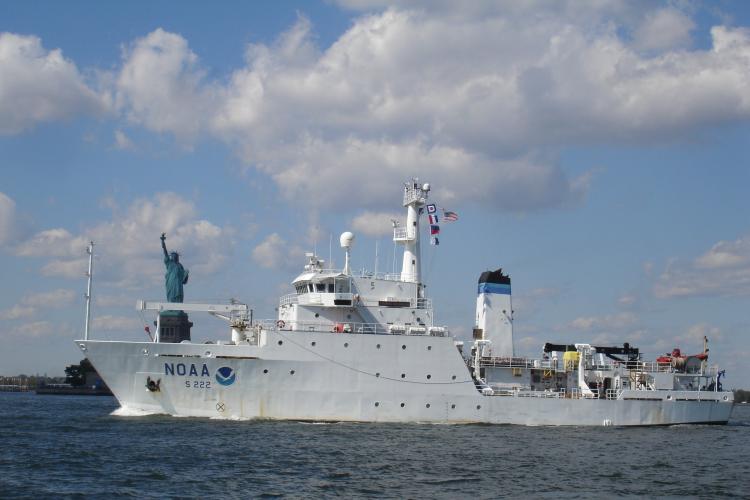
Credit: NOAA
Specifications
Contact Info
Norfolk, VA
United States
About the ship
NOAA Ship Thomas Jefferson was built by Halter Marine Inc. in Moss Point, Mississippi. The ship was commissioned on July 8, 2003, and is currently homeported in Norfolk, Virginia. NOAA Ship Thomas Jefferson is a hydrographic survey ship that maps the ocean to aid maritime commerce, improve coastal resilience, and understand the marine environment. Officers, crews, and scientists onboard the ship log the data that NOAA cartographers use to create and update the nation’s nautical charts with ever-increasing data richness and precision. Thomas Jefferson operates primarily along the Atlantic and Gulf coasts, Puerto Rico and the U.S. Virgin Islands.
Thomas Jefferson’s side scan sonar collects imagery of the sea floor, which can identify obstructions or wrecks that could be navigational hazards. The sonar emits sound waves in a swath, which generates a detailed image of objects on the seafloor.
To obtain accurate depth measurements (within 10 centimeters), the ship uses multibeam echo sounders. The bathymetric data can be converted into three-dimensional models to provide extremely accurate depths and detailed images of the seafloor and objects.
The ship also has two smaller hydrographic survey launches that conduct surveys in water depths the ship cannot access. These two launches are fitted with sonars similar to those used by the ship.
The 208-ft. ship is one of NOAA’s most valuable assets following a severe weather event or ocean emergency. During Thomas Jefferson’s career at NOAA, the ship has responded to dozens of hurricanes by searching for dangers to navigation and expediting the resumption of maritime commerce. The ship’s officers and crew also used their technology and scientific expertise to investigate changes on the seafloor and in the water column after the catastrophic events of the Deepwater Horizon oil spill.
Formerly the U.S. Naval Ship Littlehales, the ship officially entered the NOAA fleet in 2003 and was named after President Thomas Jefferson, who established the Survey of the Coast in 1807.

